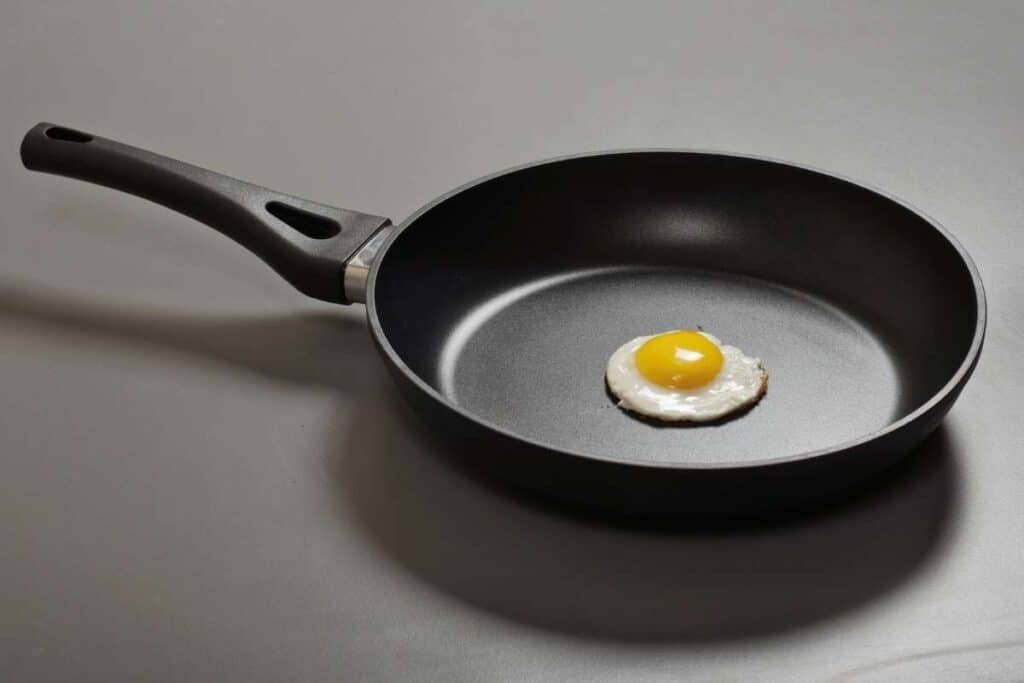As an Amazon Associate BakingBakewareSets.com earns from qualifying purchases.
How to Tell if A Pan Is Non Stick : Expert Tips
Have you ever stood in your kitchen, pan in hand, wondering, “Is this really a non-stick pan?” You’re not alone. In a world brimming with diverse cookware, identifying a true non-stick pan has become an essential kitchen skill, especially for the avid cooks and health-conscious individuals among us.
The secret to distinguishing a non-stick pan lies not just in its appearance but in understanding its subtle features. Whether it’s the smooth, sleek surface that hints at its non-stick nature, or the lightweight feel that sets it apart from its counterparts, knowing these indicators can transform your cooking experience.
But why does this matter? For many in our cooking community, from Home Cook Hannah to Cooking Enthusiast Eric, the right pan is not just a tool; it’s the key to healthier, easier, and more efficient cooking. And with the increasing awareness about cookware safety, particularly concerns around Teflon and PFOA, knowing what’s in your pan has never been more important.
So, how can you tell if your pan is non-stick with certainty? This blog post will guide you through “5 Simple Steps to Identify Non-Stick Pans Effectively”, ensuring that you never second-guess your cookware choices again. Get ready to delve into a world of tactile and visual cues, from the non-stick surface tests to understanding the nuances of cookware material – we’ve got it all covered. Keep reading to unlock these kitchen secrets and elevate your culinary skills!
How to Tell If a Pan Is Non-Stick
Identifying a non-stick pan is simpler than it seems. It all boils down to a few easy-to-spot characteristics.

Indicators of Non-Stick Pans
Firstly, let’s explore the physical attributes that set non-stick pans apart.
Visual Cues: Appearance and Color
Non-stick pans typically feature a distinct dark gray or black coating. This is your first visual cue. The surface, if new, should be devoid of scratches and should have a certain sheen – indicative of a non-stick surface.
Tactile Cues: Surface and Weight
Upon touching, a non-stick pan feels smooth and has a certain lightness to it, thanks to its aluminum base coated with non-stick material. This tactile experience is a telltale sign.
Reasons and Benefits of Using Non-Stick Pans
Using non-stick pans is not just a fad; it’s a choice driven by their numerous benefits.
Cooking and Cleaning Convenience
The ease of cooking and the minimal effort required for cleaning make non-stick pans a preferred choice. Their scratch-resistant nature and ability to cook with little to no oil are notable benefits.
Health and Diet Considerations
For those who are health-conscious, non-stick pans offer a way to cook with less oil, aligning with healthier lifestyle choices.
Maintenance and Care for Non-Stick Pans
The longevity of your non-stick pan heavily depends on how well you maintain it.
Tips to Preserve Non-Stick Coating
Avoid overheating and use gentle, non-abrasive utensils like wooden or silicone spatulas. This prevents scratching and peeling of the non-stick surface.
Recognizing When to Replace Your Pan
Once the surface begins to wear off or the pan starts to cook unevenly, it’s time to consider a replacement.
Alternatives to Non-Stick Cookware
Sometimes, it’s good to explore alternatives. Stainless steel, cast-iron, and ceramic cookware offer different benefits and might be better suited for certain types of cooking.
Comparing Non-Stick with Other Materials
Each material has its unique properties, with stainless steel providing durability and cast-iron offering excellent heat retention.
The Safety Aspect of Different Cookwares
With rising concerns about Teflon, it’s important to consider PFOA-free options and understand the safety aspects of each material.
FAQs About “How To Know if A Pan Is Nonstick”
How can I test my pan’s non-stick properties?
Try the water drop test or cook an egg without oil. If the water beads or the egg slides off easily, your pan is non-stick.
Summary
Identifying a non-stick pan is key to a better cooking experience. By understanding the visual and tactile cues, maintaining the pan correctly, and knowing when to replace it, you can make the most of your non-stick cookware. Remember, the right pan can make a world of difference in your cooking journey.


